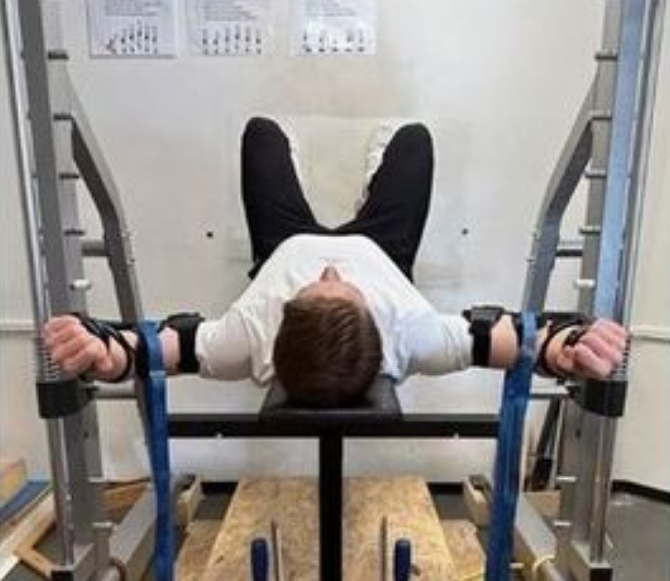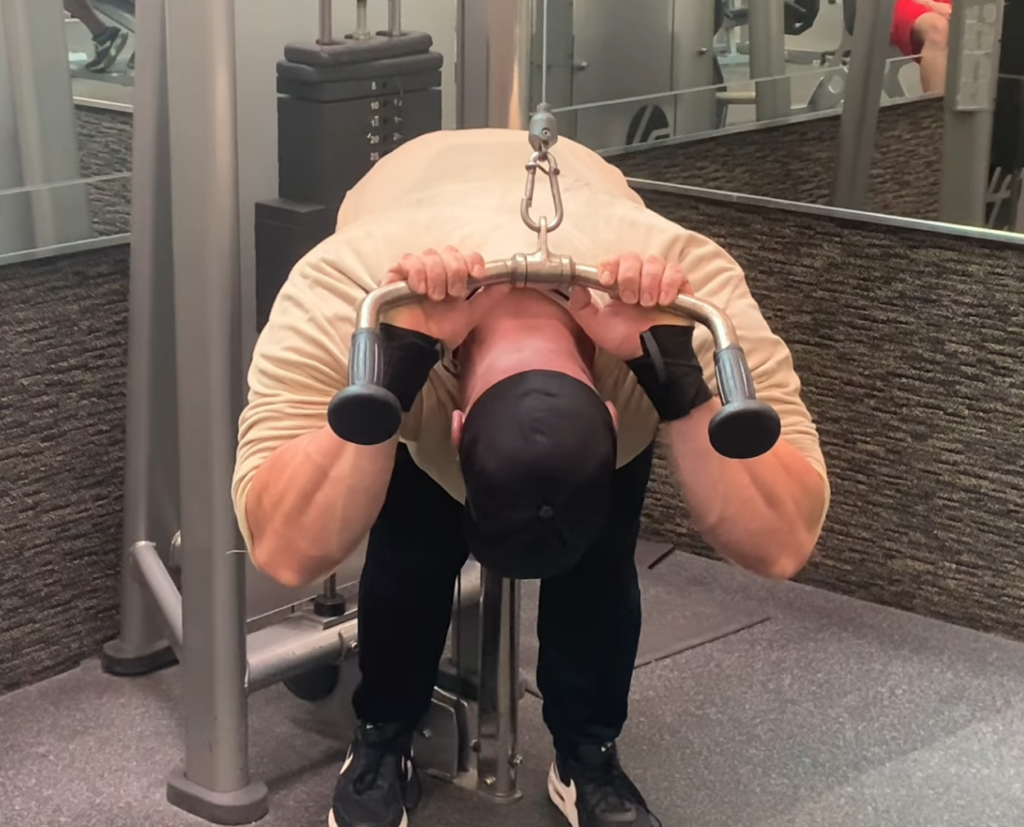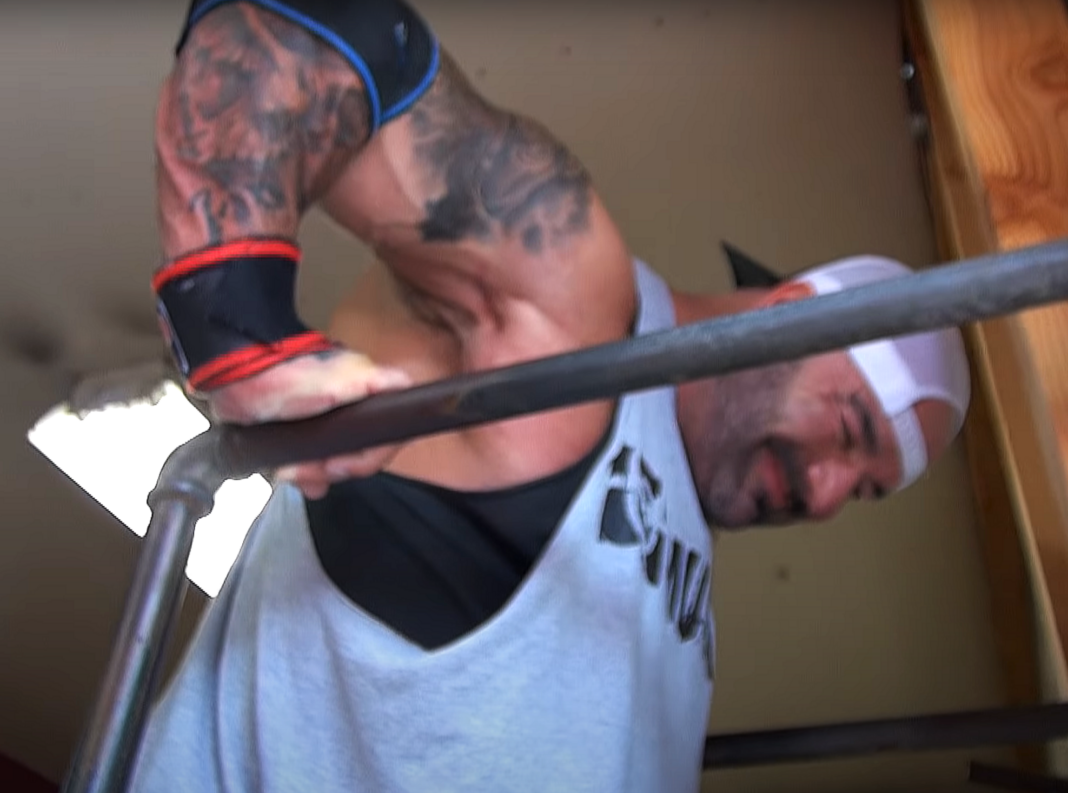An intense chest stretch. / YouTube
According to a fascinating new study, intense stretching led to gains in muscle growth and strength comparable to weight-training. Such stretching-induced gains were previously seen in animal studies, but it’s now been demonstrated in a study with human participants. Let’s check out the science of intense stretching and what it might mean for your workouts or non-workouts.
INTENSE STRETCHING STUDY
In this new study, 81 individuals were split into three groups. One group trained their chest with resistance exercises thrice weekly for eight weeks. Another group, the control, did nothing. And the third group had their pectorals maximally stretched in a special machine for 15 minutes four times weekly. The study lasted eight weeks. At the end of the study, both the weight-training group and the stretching group had gained about an equal amount of chest muscle and strength, while the stretching group had also increased flexibility.

Exercise scientist Brad Schoenfeld, PhD, wrote about the results:
New study found that intense stretching of the pecs (maximum tolerated stretch performed in a stretch machine) conducted 4x/wk for 15 mins per session produced similar pec hypertrophy to resistance training carried out 3x/wk.
There are several caveats to the findings that need to be acknowledged. For one, the participants were recreationally active but not resistance-trained. For another, some of the participants were allowed to choose which group they preferred, which makes this a quasi-experimental study (and thus reduces interval validity).
That said, the results are surprising and further the emerging evidence that stretch can have potent effects on muscle development. The study was particularly intriguing from a mechanistic standpoint, as it indicates that passive tension can have potent hypertrophic effects. This has potential implications for application to exercises, including training at long muscle lengths and implementing static stretch holds (perhaps at the end of a set).
It would be interesting to compare a resistance-training only group to a combined RT + stretch group using trained individuals. I’m putting it on our list [of studies to do].
INTENSE STRETCHING APPLICATION
So, do we think you should forgo weights on chest day (or every other day) for a session in a torturous stretching device? No. This may be an alternative method of maintaining or gaining muscle and strength in the future. But for now, we advise you to apply it to your regular workouts.
In fact, these results validate what Dante Trudel with his Doggcrapp training system has been advising for years. He has long advocated for intense static stretches immediately after training each body part. Before him, John Parrillo promoted what he called fascia stretch therapy, which is another way of saying intense stretching. (For the record, Trudel is not in the “fascia stretch camp.” He’s agnostic on how intense stretches promote growth. He recently said: To this day, I do not know the exact mechanism [for intense-stretching growth], and nobody else does either.”)

Bottom line: If you want to include intense stretches in your workouts, after training each body part, pick an appropriate stretch, get into the maximally stretched position (just where it’s getting very painful but never where it negatively affects your joints) and hold for up to three minutes. Do one or two such stretches per body part per workout.
For our list of intense stretches, go here.
















































